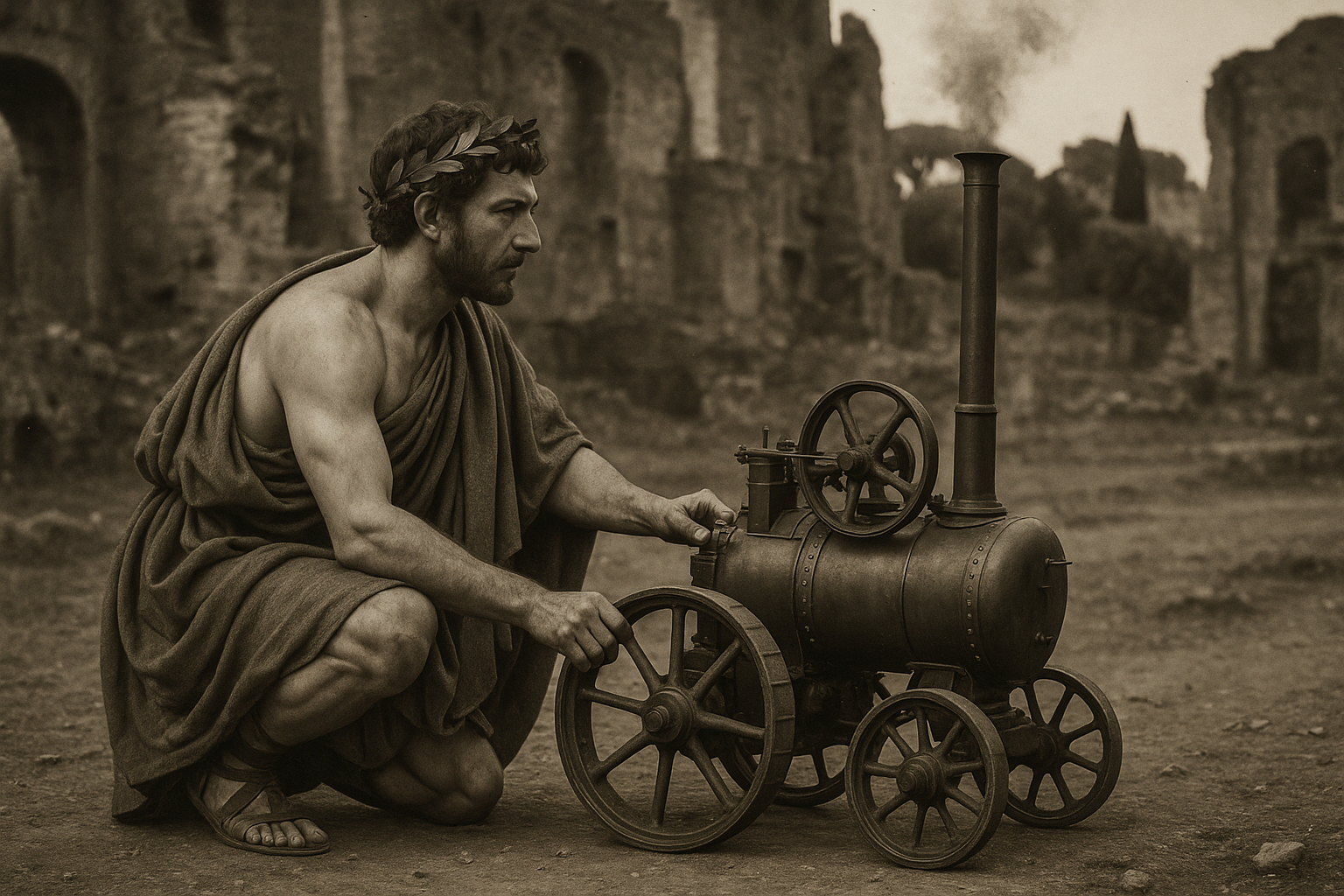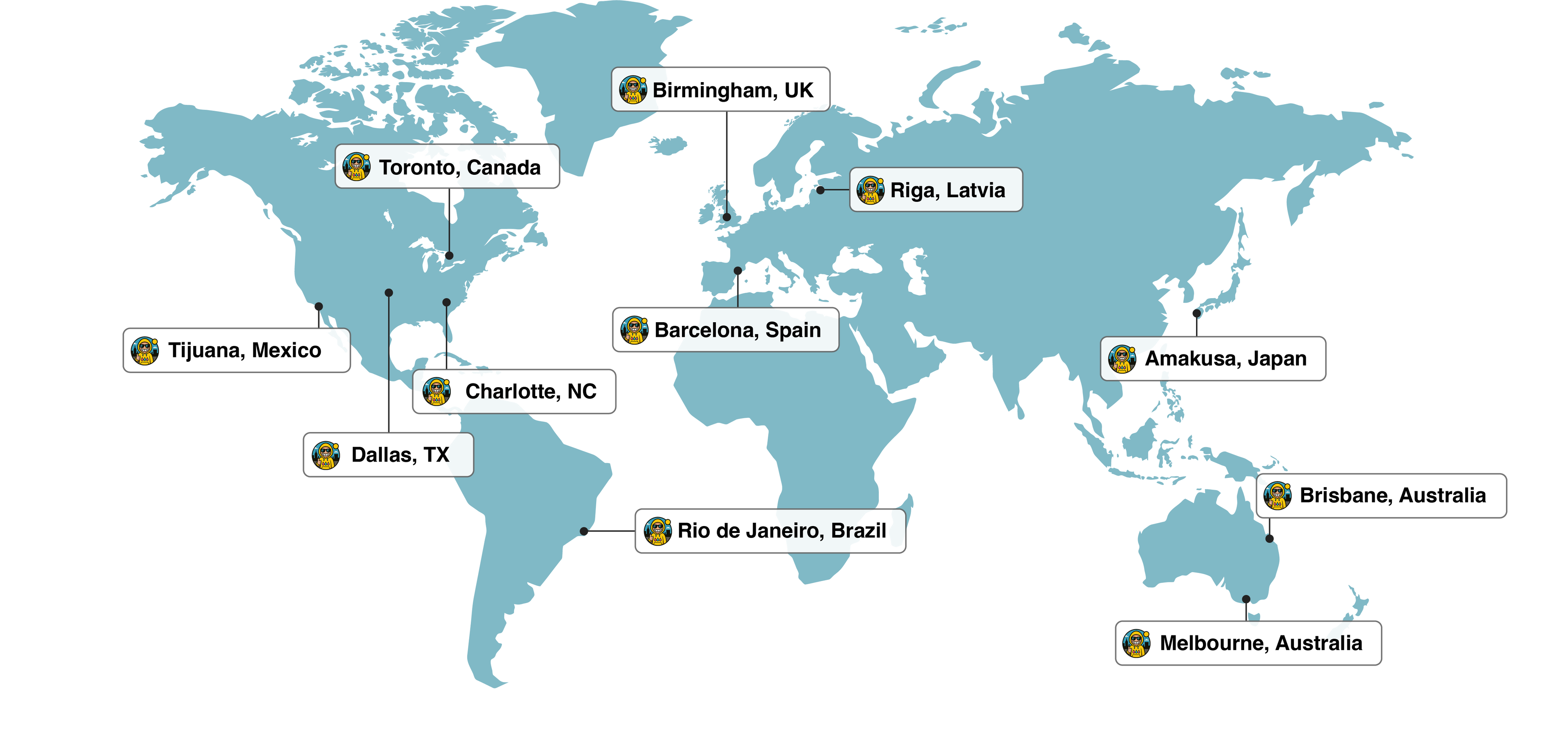Introduction
Alternate history isn’t just about wars or powerful rulers—it’s also a way to explore how science and technology could have developed along very different paths. This kind of “what-if history” invites us to consider questions such as: What if Nikola Tesla’s inventions had shaped the modern world instead of Thomas Edison’s? What if the steam engine had been invented in ancient Greece? Or what if humanity reached the Moon by 1900? By exploring these scenarios, we can see how a single invention, or the lack of it, can completely change the way people live and interact with the world. These thought experiments also help us understand the relationship between discovery, society, and digital cultural heritage.
Alternate history scenarios highlight that technological progress is not guaranteed or predictable—it often depends on personal choices, chance events, and the broader context of society and culture. Imagining alternative timelines can help us appreciate the real innovations that shaped our lives, and encourages us to think critically about the forces that drive or slow progress.
What If Nikola Tesla’s Vision Had Won?
Nikola Tesla was a remarkable inventor, known for his work on alternating current (AC), wireless energy, and early radio. In reality, Thomas Edison’s direct current (DC) system became the norm, especially in the United States, mainly because of Edison’s business influence and strong promotion. But in an alternate timeline, what if Tesla’s vision of wireless power and global communication networks had become standard across the world?
Imagine modern cities filled with wireless energy towers rather than power lines. Technologies like electric cars, smart homes, and even wireless internet might have arrived decades earlier. The spread of wireless power could have made energy more accessible, changing economies, reducing inequalities, and possibly having a positive impact on the environment.
Tesla’s world may also have fostered greater openness in scientific research, as many of his inventions were meant to benefit everyone, not just big companies. New ideas and inventions might have spread faster and reached more people, transforming education and daily life. Today, we can explore these possibilities through virtual reality (VR), immersive history experiences, and digital museum tours that simulate what life could have been like with Tesla’s technology.
What If the Steam Engine Was Invented in Ancient Greece?
Hero of Alexandria, a Greek inventor from the first century AD, built a basic steam-powered device called the aeolipile. It was never developed into practical machinery at the time, but some historians wonder: What if the Greeks or Romans had improved Hero’s design and built real steam engines?
In this alternate history, the ancient world might have experienced its own industrial revolution nearly two thousand years earlier than in our timeline. Steam-powered factories, machines for farming, and even railroads could have transformed cities across the Mediterranean. Early mechanical computers inspired by devices like the Antikythera mechanism might have advanced navigation, science, and astronomy far ahead of schedule.
Such a leap could have changed trade routes, travel, and possibly led to global exploration much sooner. Cities would have looked different, filled with steam-powered transport and machinery. Even warfare and politics might have changed, as new technology would alter power dynamics between states.
Today, interactive history games, alternate timeline maps, and immersive simulations help us visualize this steam-powered ancient world, showing both the opportunities and challenges of such an early industrial revolution.
What If the Space Race Happened Earlier?
What if the space race had started not in the 1950s, but in the 1800s or before? Imagine hot air balloons, powerful telescopes, and early rocket experiments inspiring a worldwide contest to reach the Moon by 1900.
In this timeline, countries might have prioritized science and engineering much earlier, leading to Victorian-era moon bases and orbiting stations powered by steam. Advances in telescopes and navigation could have improved world maps and global communication, speeding up technological progress everywhere.
This early space era would also reshape politics and culture. Nations might compete or cooperate in space, and people could begin to see themselves as citizens of Earth, not just individual countries. Today, augmented reality (AR) apps and VR reenactments allow us to experience what it might have been like to build a moon base in the past, and help us think about how technology shapes beliefs, society, and our own identity.
Exploring "What-If" Scenarios With Technology
Modern technologies like VR history education, alternate history video games, and virtual museum tours make it possible for everyone to explore these imagined timelines. Digital heritage websites, timeline visualizations, and online forums offer opportunities to share and discuss new what-if ideas, bringing together a vibrant alternate history community.
Augmented reality and immersive digital experiences allow students and history fans to “walk through” ancient cities powered by steam or explore futuristic cities with Tesla-inspired inventions. These tools make learning about science, technology, and history more engaging, while developing creative and analytical thinking skills.
Teachers use alternate history in classrooms to encourage students to write speculative stories, debate key events, or design interactive projects. These activities might include building an alternate timeline map, planning a VR historical reenactment, or organizing a virtual museum tour focused on inventions that never existed.
Conclusion
Alternate history focused on science and technology reminds us that progress is shaped by many factors—chance, choices, culture, and sometimes even luck. Exploring “what-if” questions helps us think creatively and critically about our world. Through interactive games, simulations, virtual heritage tours, and collaborative writing, alternate history inspires us to appreciate innovation’s role in society and encourages curiosity about the future. Even small changes can create entirely different worlds—and studying them can teach us a lot about our own.


